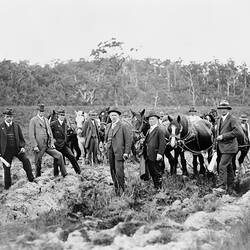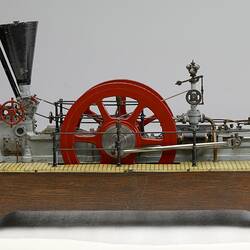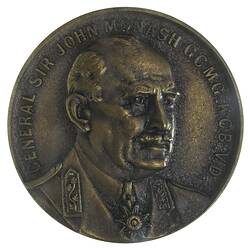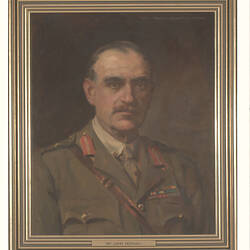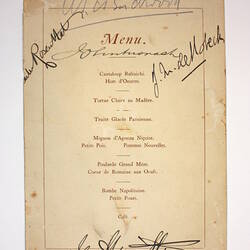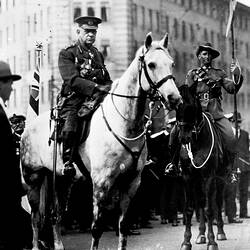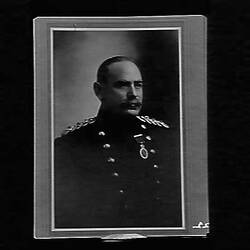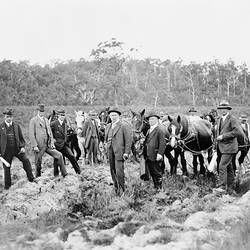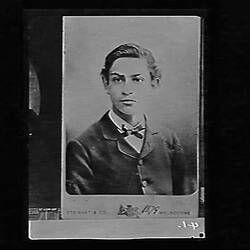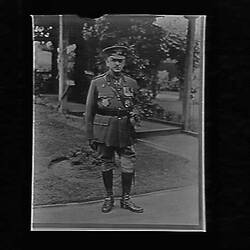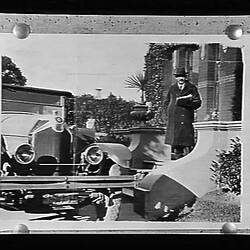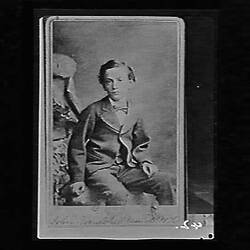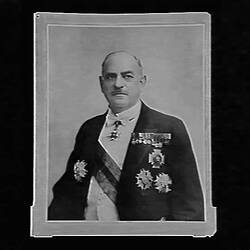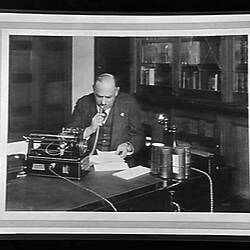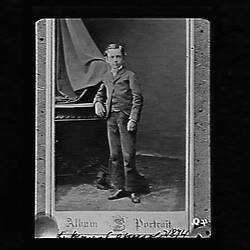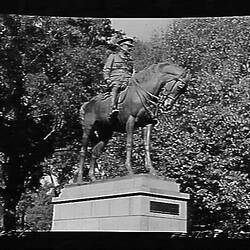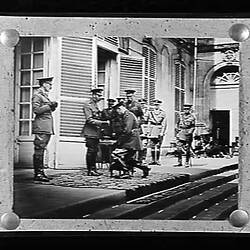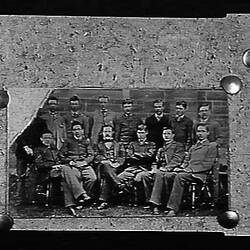John Monash was born in Melbourne on 27 June 1865 into a Prussian-Jewish family. He was educated at Scotch College and Melbourne University. Academically promising, but distracted by his mother's long fatal illness, in 1895 Monash finally held degrees in arts, engineering and law. He qualified as a municipal surveyor and an engineer of water supply, and was also a patent attorney. Monash's early career focused on bridge construction. He worked for the Melbourne Harbour Trust before becoming a partner in a bridge construction firm. By 1900 his focus had changed to building construction.
Monash's military career began at the age of 19, with his membership of the Melbourne University company of the 4th Battalion, Victoria Militia, and then the North Melbourne Battery of the Metropolitan Brigade of the Militia Garrison Artillery. He was commissioned in 1887. Twenty-six years later Monash had attained the rank of Colonel and was appointed to command the 13th Infantry Brigade. With the outbreak of World War I in 1914, Monash was transferred from the militia to active service. In 1915 he served as chief censor until taking command of the 4th Infantry Brigade, AIF. In this capacity he served at Gallipoli. He was soon promoted to Major-General, and commanded the 3rd Division, AIF, in France in 1916. In 1918, at the age of 53, Monash succeeded General Birdwood as Australian Corps commander. In the same year, King George V recognized his role in the Battle of Hamel Hill with a knighthood. After the War Monash became Director-General of Repatriation and Demobilisation, and was responsible for arranging the return of Australian troops from Europe.
Returning to Australia Monash resumed his engineering career, taking on the position of General Manager and later Chair of the State Electricity Commission (SEC) of Victoria. Under his guidance the SEC became an significant body in the development of Victoria's brown coal reserves as an electricity source and, by 1930, had extended the power grid across the whole of the State.
John Monash died in Melbourne on 8 October 1931.
The personal records of Sir John Monash and memorabilia relating to his life are held by the National Library of Australia, the Australian War Memorial and the archives of the University of Melbourne and Monash University. The National Archives holds a range of official records that refer to his dealings with the Commonwealth, many relating to his military service. -Fact Sheet 12, National Archives of Australia web site http://www.naa.gov.au/fsheets/FS121.html.
A medal depicting Monash was issued circa 1945 (NU 33126).
Two John Monash medals are currently issued. The Sir John Monash Medal for Outstanding Achievement is awarded by Monash University to final year undergraduate students with excellent academic records who have also achieved excellence in another arena. One medal is awarded per faculty and sub-faculty per year. The John Monash citation and award by Engineering Heritage Australia acknowledges an engineer who has made an outstanding contribution to engineering heritage over a considerable amount of time by activities such as raising the awareness of engineering heritage within the profession, promotion of engineering heritage within the community or other worthy contributions.
References:
Engineers Australia website http://qld.ieaust.org.au/jetspeed/static/items/6/2571/Novforweb.pdf, accessed 01 Dec 2003
Monash University website http://www.adm.monash.edu.au/unisec/academicpolicies/policy/recogexcel.html, accessed 01 Dec 2003
More Information
-
Keywords
-
Localities
-
Authors
-
Article types

